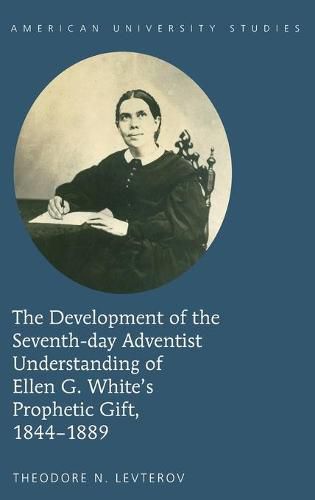Readings Newsletter
Become a Readings Member to make your shopping experience even easier.
Sign in or sign up for free!
You’re not far away from qualifying for FREE standard shipping within Australia
You’ve qualified for FREE standard shipping within Australia
The cart is loading…






This title is printed to order. This book may have been self-published. If so, we cannot guarantee the quality of the content. In the main most books will have gone through the editing process however some may not. We therefore suggest that you be aware of this before ordering this book. If in doubt check either the author or publisher’s details as we are unable to accept any returns unless they are faulty. Please contact us if you have any questions.
Ellen G. White was a major figure of nineteenth-century American Christianity although she has not been widely studied or researched. Shortly after the second coming of Jesus predicted by the Millerites did not materialize on October 22, 1844, White became one of the principal leaders of a small remnant group of disappointed believers. She also began claiming visionary manifestations. The Sabbatarians, who later came to be known as the Seventh-day Adventists, gradually accepted White as having the genuine gift of prophecy and her gift became one of their distinctive doctrines. How did the early Sabbath-keeping Adventists become convinced of her prophetic claims?
This volume is a historical examination of the process through which early Seventh-day Adventists justified and accepted White’s prophetic claims between 1844 and 1889. It evaluates and analyzes the development of their understanding of the doctrine of the gift of prophesy in general, and White’s gift in particular. In 1844, she claimed to have received her first vision, and by 1889, the essential arguments for and against her prophetic gift were in place.
Ellen White’s gift of prophecy has remained a controversial subject within and outside the Seventh-day Adventist denomination. This analysis provides an important historical context that illuminates the prophetic claims of Ellen White and the attempts of her denomination to find a more balanced and informed approach toward such a complex topic.
$9.00 standard shipping within Australia
FREE standard shipping within Australia for orders over $100.00
Express & International shipping calculated at checkout
This title is printed to order. This book may have been self-published. If so, we cannot guarantee the quality of the content. In the main most books will have gone through the editing process however some may not. We therefore suggest that you be aware of this before ordering this book. If in doubt check either the author or publisher’s details as we are unable to accept any returns unless they are faulty. Please contact us if you have any questions.
Ellen G. White was a major figure of nineteenth-century American Christianity although she has not been widely studied or researched. Shortly after the second coming of Jesus predicted by the Millerites did not materialize on October 22, 1844, White became one of the principal leaders of a small remnant group of disappointed believers. She also began claiming visionary manifestations. The Sabbatarians, who later came to be known as the Seventh-day Adventists, gradually accepted White as having the genuine gift of prophecy and her gift became one of their distinctive doctrines. How did the early Sabbath-keeping Adventists become convinced of her prophetic claims?
This volume is a historical examination of the process through which early Seventh-day Adventists justified and accepted White’s prophetic claims between 1844 and 1889. It evaluates and analyzes the development of their understanding of the doctrine of the gift of prophesy in general, and White’s gift in particular. In 1844, she claimed to have received her first vision, and by 1889, the essential arguments for and against her prophetic gift were in place.
Ellen White’s gift of prophecy has remained a controversial subject within and outside the Seventh-day Adventist denomination. This analysis provides an important historical context that illuminates the prophetic claims of Ellen White and the attempts of her denomination to find a more balanced and informed approach toward such a complex topic.